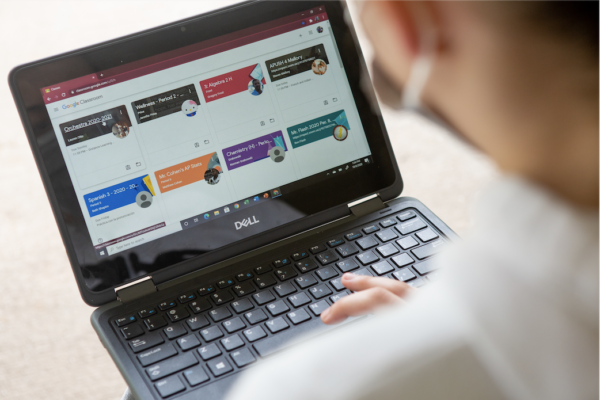In March 2020, public schools across the country closed their doors and embarked on the largest-ever experiment in remote learning. Despite heroic efforts by many parents and teachers, the impact on students has been devastating. Severe learning losses have emerged in reading and mathematics, especially among children of color. But there has been a silver lining to the crisis: We’ve finally broken down the boundary between home and school.
When schools shut down last March, parents suddenly became tutors and teachers. Schools, no longer able to send information home in backpacks, had to find new ways of communicating. These developments accelerated an appreciation of family engagement to a degree hard to imagine a year ago.
Partnerships between schools and families have long been recognized as beneficial for children. Research has shown that parents’ involvement in their children’s learning has a greater impact on students’ test scores than parents’ education level or socioeconomic status, and that family-engagement efforts can increase children’s attendance and academic achievement. But despite the research, family engagement strategies have not been widely adopted by schools or school districts.
Now is the time. The learning losses that have occurred during the Covid crisis are too great to be remedied through teachers’ efforts alone. A recent study found that just 43 percent of first-graders are on track in early reading skills this year, compared with 58 percent last year. Another study showed that students are likely to lose an average of five to nine months of learning in mathematics by the end of this school year, with larger losses for students of color than for white students.
Yet engaging families effectively and equitably in their children’s learning is no small feat, especially when teachers and parents are already stretched thin. To connect with families, teachers must cross language barriers, navigate cultural differences, and adapt to families’ diverse needs.
[Read More: Covid Relief Playbook: Smart Strategies for Investing Federal Funds]
A number of technology nonprofits are addressing these challenges. Springboard Collaborative, for example, enables teachers, families and students to work together towards reading goals, delivering meaningful literacy gains for young students, even during the pandemic. Both FASTalk and TalkingPoints use text messages to help teachers communicate with families in multiple languages.
If a child is struggling with a math skill, a teacher can use FASTalk to send a text message to the parent in his or her home language with tips on how to help the child master the skill at home. Baltimore City Public Schools is rolling out this technology to families of middle schoolers this year. And TalkingPoints, which uses a combination of human translation and artificial intelligence, enables parents and teachers to text about their children’s successes and challenges in over 100 languages.
But such tools are underutilized. Combined, these organizations reach only 10 percent of the more than 28 million families with school-aged children. To meet students’ needs and improve educational equity, we need to reach the other 90 percent.
For that to happen, school systems across the country must invest in family engagement efforts that use proven practices and tools like FASTalk, TalkingPoints, and Springboard Collaborative. If they don’t, students will return to schools in the Fall that, in too many cases, continue to be artificially disconnected from families to the detriment of students’ learning.
Stephanie Sharp is the associate program officer of the Early Impact portfolio at Overdeck Family Foundation. Ambika Kapur is a program officer within the Carnegie Corporation of New York’s Education program where she manages the Public Understanding portfolio.
The Carnegie Corporation of New York and Overdeck Family Foundation support FutureEd.


